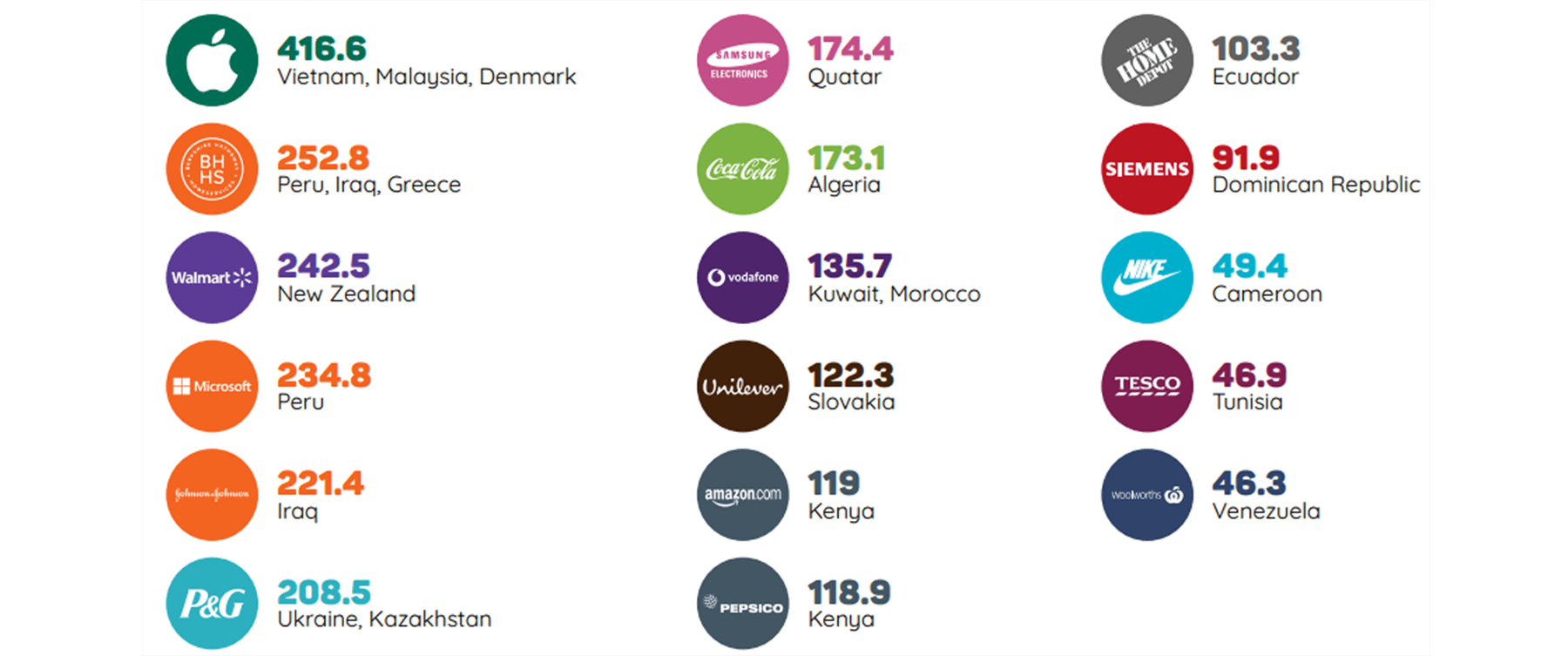
Retailing is big business, and brands selling anything from clothes to computers make trillions of dollars every single year. We decided to look at the world’s most successful brands and the biggest names in retail to see how they compare against each other. The data we revealed showed us that many of these brands have more value than whole countries…
Brands with the highest market values
(in Billions)
Perhaps unsurprisingly, Apple takes the lead in terms of market value – with an estimated value of $416.6 billion. Coming in second is Berkshire Hathaway, a conglomerate that owns multiple well-known brands, including Duracell and Dairy Queen.

According to our data, the top 10 retail and household names have a combined market value of $2.18 trillion.

The combined wealth of the top 10 is only outranked by a handful of countries, including the US and China.

Above indicates the GDP of several countries. Only a small number of them have a GDP that is higher than $2.18T.
If the wealthiest companies were countries…
If we assign the value of the top earning brands to countries based on the company’s market value vs GDP, we get an idea of how insanely profitable they are.
Take a look at the map below.


Numbers indicate market value in billion $, Companies were assigned to countries based on closest comparisons of market value and GDP.
According to our research, Apple’s market value is higher than Vietnam, Malaysia, and Denmark’s individual GDPs. Meanwhile, Berkshire Hathaway has a higher market value than Peru, Iraq and Greece.
This paints a shocking picture of how much money bigger companies make on an annual basis.
Success stories – how the top 3 retail brands made it
These are the high street retailers that have the biggest global market values (in $ billion).

From investing into employee wellbeing, to keeping up with the latest trends in retail display, these stores have created the perfect formula for success. But how did they make it to this point?

What can we learn? Walmart’s success is down to a lot of business savvy. But in recent years, they have jumped the gun on charitable causes and stayed relevant by providing better working conditions for employees and introducing modern services like curb-side pickups for online orders.
- Stay savvy
- Donate to charitable causes
- Help your employees have a better quality of life
- Provide modern, convenient services

What can we learn? Home Depot has placed itself at the centre of communities, donating to causes its customers care about and willingly showing support. It has stayed way ahead of the curb for decades, opening self-checkouts years before most stores, and launching its eCommerce site in 2000.
- Show customers you care
- Stay ahead of the curb
- Take advantage of new technology

What can we learn? We all know that Tesco is a British institution – where would we be without it? But there is a reason behind their success. The founders of Tesco kept their eyes facing forwards to the future, started passing savings to their customers very early on with the introduction of Green Shield stamps, and became innovators in the retail sector. The introduction of different types of stores meant shopping became more convenient than ever.
- Innovate
- Keep your eyes on the future
- Pass on savings to customers
- Make shopping convenient
Method
We compared the Market Value of retailing companies and well-known brands against the GDP (Gross Domestic Product) of countries to create a workable dataset.
Sources
https://ceoworld.biz/2022/03/31/economy-rankings-largest-countries-by-gdp-2022/
https://www.populationu.com/gen/countries-by-gdp
https://live-home-depot-corporate.pantheonsite.io/sites/default/files/THD%20Timeline.pdf